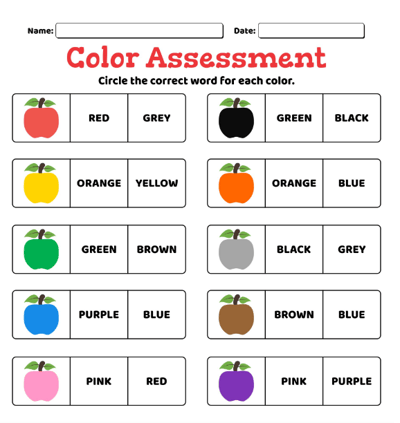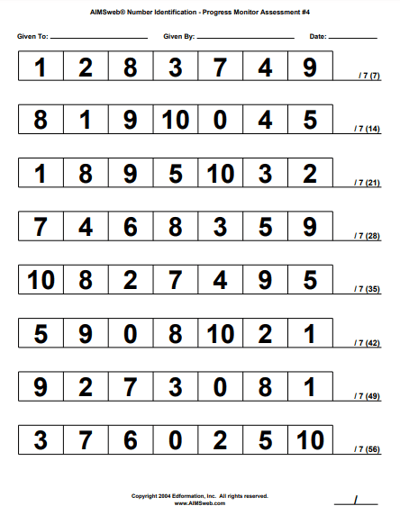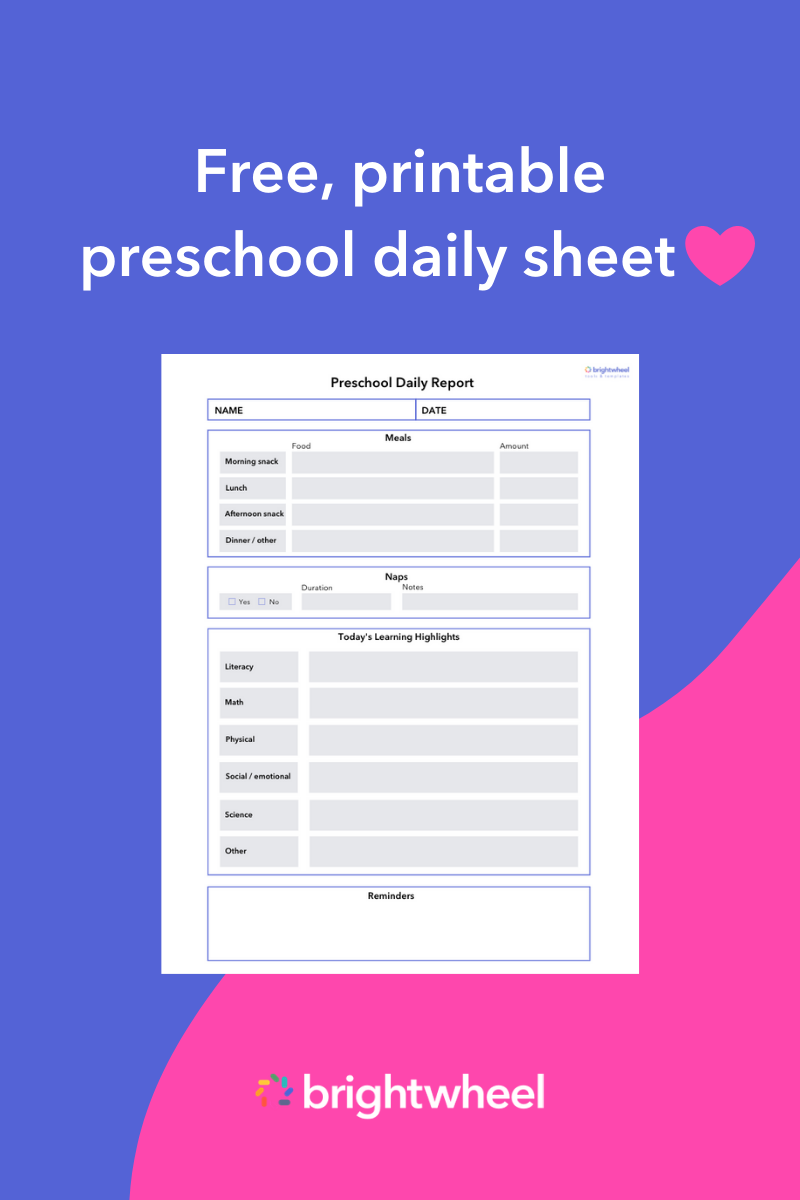
Preschool assessment forms are part of a lifecycle that fuels your classroom. They provide valuable insight that keeps your staff focused on supporting early childhood learning.
You can also use these forms to fine-tune your curriculum, address your class's strengths and growth areas, or improve parent-staff communication. Your entire program benefits when you use preschool assessment forms. There’s an opportunity for growth at each stage for the children, their families, and your staff.
How to use preschool assessment forms
Assessments can be used at different points in the learning process to better understand what the children know, their progress over time, and what they’ve learned. Assessments types to consider include:
- Formative: You use these assessments to help evaluate children during the learning process.
- Summative: These assessments help determine how much a child has learned after a lesson.
- Interim: Interim assessments work like a hybrid of the previous two styles. This method allows you to track growth over time by assessing children during a lesson and at the end.
The type of preschool assessment form you choose will ultimately depend on your lesson plans and goals for each child. Brightwheel's progress reports make it easy to track student progress. With customizable portfolio templates and simplified assessment practices, you can monitor each child's progress against state standards or your program's learning framework and share progress instantly with families.
Stage 1: Creating a preschool assessment form
We strongly recommend checking state regulations or guidelines before creating your assessment forms. You’ll want to ensure you’re meeting your own state's requirements, and other states’ guidelines could contain valuable examples you can use for your forms.
Some resources include:
- Washington State's Guide to Early Childhood Assessment
- National Institute for Early Education Research (NIEER) Early Learning Scale
- Massachusetts Department of Early Education's Guide to Early Childhood Assessment
- California's Preschool Learning Foundations
- Georgia Early Learning and Development Standards
Pay attention to and note any developmental milestones for your children’s age groups. For example, which milestones should children in an early education program reach by the end of the program? Should they be able to cut with scissors, count up to 30, or recognize the letters of the alphabet?
Next, identify the primary categories you will assess (e.g., literacy, math, fine motor skills, social-emotional development). These categories should reflect the developmental milestones you highlighted in the first step.
Then, list the criteria you’ll use to determine each child's progress in each category. If you’re assessing a child’s literacy skills, for example, list tasks they should be able to complete.
Finally, add your milestones, categories, and criteria to a document. You can use a template with a standardized rating system to build out your form—try the one available for download at the end of this article.
Remember to check state guidelines every year as they may change!
Stage 2: Filling out your assessments
Stage two of the lifecycle is conducting assessments of the children in your care. Observe each child over a predetermined period to determine whether or not they've reached the milestones outlined on your assessment forms.
Children's performance will vary daily, so administering one “test” may not indicate their overall ability. Instead, look for consistent progress by a child to the point where they regularly meet the criteria for development. For example, a child who regularly chooses to engage in art and writing activities while showing a high level of fine motor skills might meet your highest standards for mastery of fine motor skills.
Also, collect materials for child portfolios while completing preschool assessment forms. This helps build a complete timeline of each child's progress with examples, comprehensive notes, and objective standards to show growth. Keeping a portfolio and formal assessment on the same timeline streamlines how you evaluate a child's development.
Stage 3: Using forms to enrich the curriculum
What similarities do all children share? Are specific skills stronger? Where are growth opportunities?
Use these observations to make changes to your preschool curriculum. For example, you can adopt a more advanced lesson plan or offer challenging activities where their knowledge is strong. Conversely, address gaps in knowledge by understanding the child’s zone of proximal development and supporting the child’s learning through scaffolding techniques.
If only a few children need support or more challenging activities in a certain area, include them in your lesson plan. Be sure that any staff working in your classroom is aware of children that may need extra or different learning experiences, and plan for how these new activities could affect classroom dynamics.
You can't always predict the strengths or interests of your classroom, but you can regularly course correct to better support progress and development. Look at your materials at the end of a session and use your data to improve your offerings. Note which lessons could be modified to suit faster development and what worked to strengthen a group's less-developed skills.
Stage 4: Talking to families about their child's development
The final stage is discussing the assessment results with families. This step is a great way to open a conversation with parents concerned about kindergarten readiness. Formal assessments provide a more objective benchmark to demonstrate where children are developmentally.
Review the child's formal assessment with their portfolio when talking with families. Include samples of their work, staff notes, and even video. Extra materials create a holistic picture of a child's growth.
Portfolios can also help demonstrate those skills assessed in your development form, like literacy and writing, fine motor control, and color and shape identification.
Assessments highlight a child's strengths and growth areas. The factual nature of development criteria can help families see their child's skills more objectively.
You can meaningfully engage families by bringing visibility to what the children are learning daily and recommending activities to support their development. Sharing the activities of the day with families is a great way to partner together to build a strong home-to-school connection.
Preschool assessment form examples
Preschool assessment forms allow you to monitor the development and progress of your children. At this age, children’s development is typically focused on the alphabet, colors, math, and shapes, among other skills.
Use the following preschool evaluation forms to help guide your curriculum and enrich your lesson plans.
Alphabet assessment
Children typically start learning the alphabet around 2-3 years old, with their familiarity growing over the next few years. Therefore, preschool assessments are a great time to test them on it. At this point, they should have learned to say the ABCs in order, recognize the letters in the alphabet, and make connections between the letters and their sounds.
An alphabet assessment allows you to assess whether your children recognize the letters in the alphabet, whether capital or lowercase. The above example is an excellent model because it randomizes the letters. Avoid listing the alphabet in order as your children may recognize the pattern and identify the letters based on memorization.
Color assessment

Some children can recognize colors as early as 18 months, but preschool is usually where they focus on identifying colors.
You can use the above preschool assessment form as an example of a test on colors and words. This assessment also tests their ability to identify colors based on visual cues.
Your children’s color assessments will change over the school year, but the above example will help you monitor their progression.
Math assessment

In preschool, children begin mastering numbers 1-20, but they should have a firm grasp of the numbers up to 10. They’ll also work on number identification and counting. Strengthening and monitoring their basic skills is paramount as they build towards learning larger numbers.
Shape assessment

Identifying shapes is another skill children start developing around two years old. With visual cues and auditory repetition of the words, they can begin learning basic shapes like circles, squares, triangles, and rectangles. From there, they can move to more advanced shapes like ovals, diamonds, stars, and hearts as they advance.
Naming shapes might take longer to develop than recognizing the shape; however, the above preschool assessment form helps determine how well your children are doing.
If you are in the process of creating or updating your preschool assessment forms, check out our template here (click to make a copy of the Google doc and edit to meet your needs). It includes the five categories of development as outlined by the Georgia Early Learning and Development Standards and an example of assessment criteria for each. You can easily modify the template to reflect the guidelines you use at your preschool.
Use assessment forms to your advantage
The assessment cycle builds a natural rhythm into your program planning and provides valuable touch points for families and staff. Despite the name, you can use preschool assessment forms for more than gauging and recording children's progress; they can play a part in strengthening your curriculum and forging better relationships with families.


